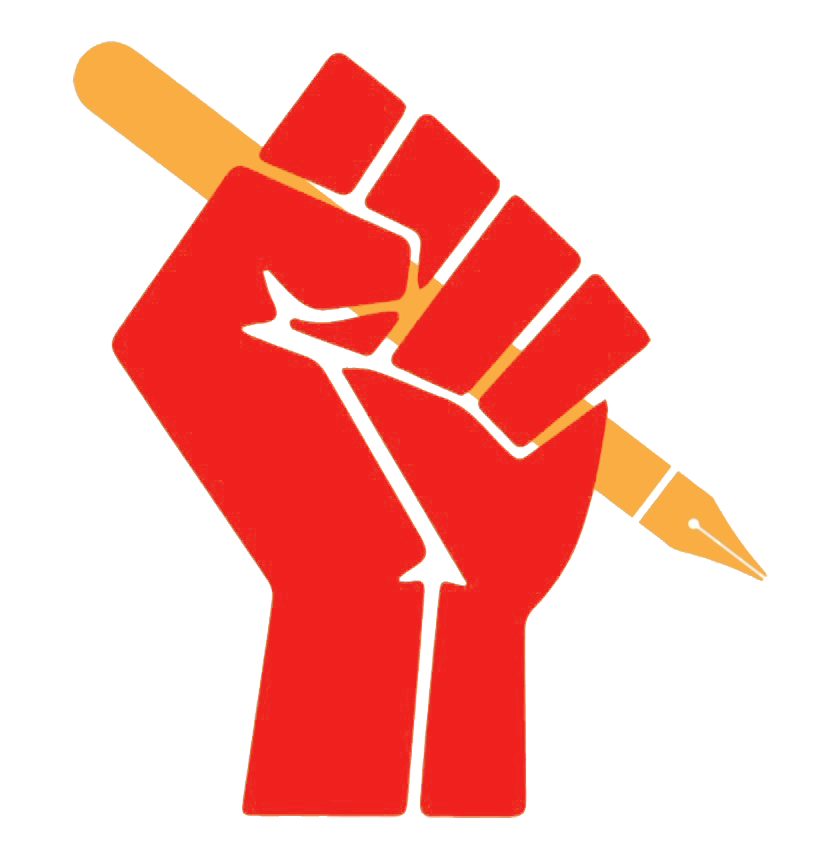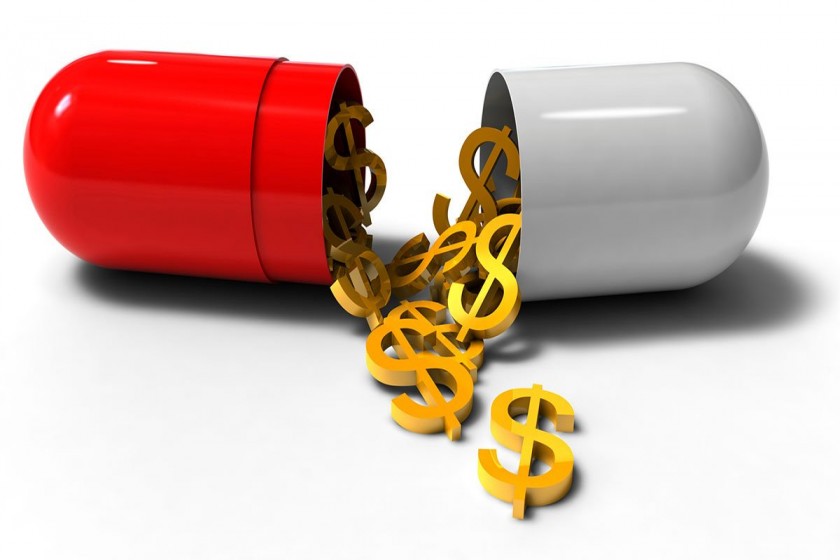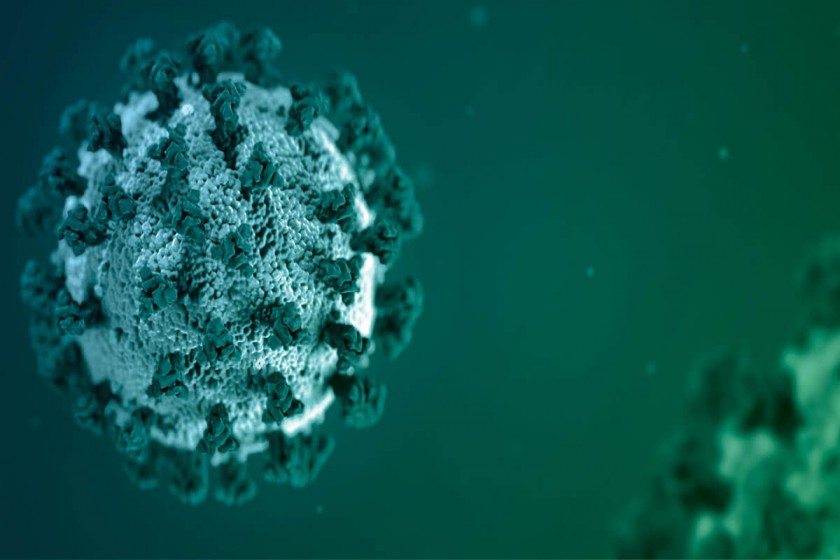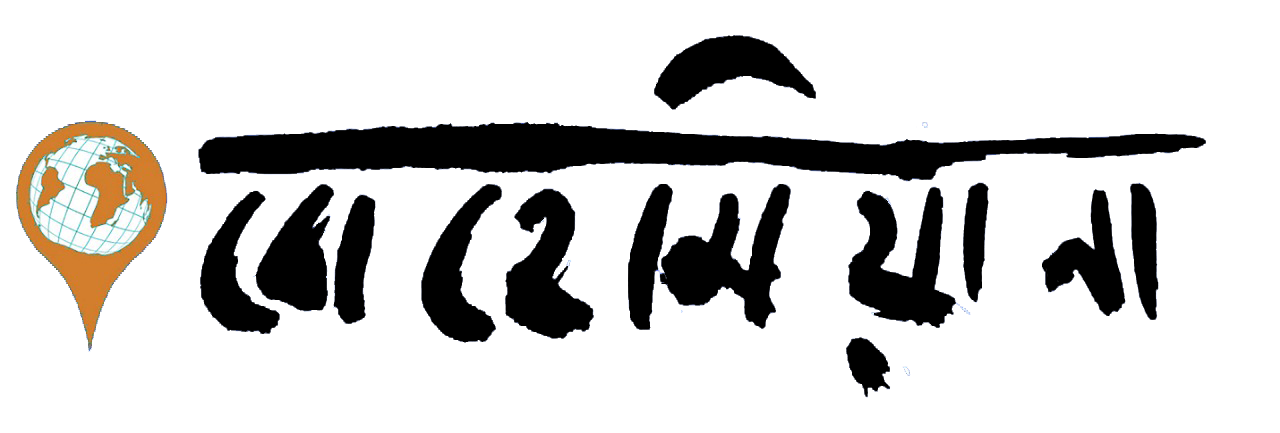More than 800,000 children under five years of age die of pneumonia each year at a daily average of 2000. In India, more than 14 children lose their lives due to pneumonia in an hour; 1,27000 die each year. The main causes of pneumonia are malnutrition and pollution.1 There are however vaccines for preventing pneumonia. They are owned by British company GlaxoSmithKline and US pharmaceutical giant Pfizer. Pfizer’s vaccine is used in India. A single dose of this vaccine costs $250, equivalent to INR 18,834. The ‘munificent’ Pfizer offers discount to Indian children. It sells the vaccine in Indian markets at 8 pounds which translates to INR758.83. Despite such ‘munificence’, it stays beyond the means of children belonging to the poorest of the poor families in India. Thus, they are invariably left to die. Meanwhile, Pfizer earns 4500 million Pounds annually by selling pneumonia vaccines.2
Corporate Fishing had deprived the inhabitants of west Africa of their supply of fish. Driven by lack of protein in their diet they started hunting Chimpanzees and Monkeys deep in their forests. As a result, they were infected by vector borne AIDS (or HIV). Foreign pharmaceutical companies invented medicines for this disease as well. The cost of this medicine was fixed at $10,000-15,000 annually. The result was inevitable. Millions of Africans died of this disease. This cavalcade of death continued from 1994 to 2004 until finally AIDS started to be a serious threat to populations in other parts of the world too. An Indian company employed a separate process to manufacture medicine for AIDS. It cost a dollar a day or 350 dollars annually. There was a great deal of disquiet over the manufacturing of a medicine owned by a foreign company through a separate process. The cheaper version of the medicine was finally approved despite threats and after much struggle and negotiations. 80 per cent of HIV drugs are presently supplied by this Indian company.3
There are numerous such examples. The cost of treating Hepatitis C through drugs produced by US Company Gilead Science – a company contracted by the US government for production of COVID vaccine. Incidentally, the Indian government has also initiated contacts for procuring drugs form this company. The cost for the treatment of Hepatitis C runs into six digits. However, its cost of production is a meagre $100. The company has earned more than $7000 million by selling this drug alone.4
The multinational drug companies have effectively established monopolistic control over the production and supply of vaccines, drugs, medical equipment etc. through the instrument of Intellectual Property Rights. Prices of drugs, vaccines and the like have skyrocketed due this phenomenon of monopolistic control. The governments of Britain and the US have entrusted these companies with the task of developing vaccines and medicines for coronavirus. One gathers that more than 100 companies are presently engaged in developing a vaccine. However, no one is certain about the amount of time it shall take before a vaccine is available in the market. No one knows how many lives the virus shall claim before a vaccine is ready or whether the virus shall lose its potency by the time a vaccine is available.
Even though there is a great deal of initiative in developing a vaccine, it is argued by many that business in vaccine does not promise high rates of profit. According to an opinion, the vaccine market has doubled since 2014. The size of the vaccine market last year was estimated at $54 billion.5 However the size of the overall pharmaceutical market, which is one of the fastest growing businesses, is a whooping $1.2 trillion.6 This means that business in vaccines accounts for only 4.5% of the total pharmaceutical business. There were 26 vaccine companies in 1967. This was reduced to 17 in 1980. Presently, the number is in single digit. 7 Four giant corporations presently occupy 85% of the business. They are Britain’s GlaxoSmithKline, France’s Sanofi and the US company Pfizer and Mark. They have earned $44 from a single dollar they invested in 94 developing countries across the world.8 Despite this, pharmaceutical companies insist that the costs entailed in huge investments in vaccine business, time and costs of clinical trials and expenses involved in obtaining government licenses greatly curtail profit margins in vaccine business. Thus there has been a trend of moving away from the production of not only vaccines but anti biotic, anti fungal and anti viral drugs towards investment in more profitable drug businesses in the last 40-50 years.
The private opinions of multinational company bosses and investors are quite indicative. Goldman Sachs asked in 2008, “Is treating patients a profitable business?”9 In effect, cure rather than prevention of a disease is being considered more profitable. It is more profitable to invest in curing lung ailments and cancer rather investing in steps to reduce smoking. American medical students are being trained more in identification and cure of diseases rather than their prevention.10 Thus, research on vaccine is being sidelined at the expense of research on and production of drugs to cure cancer, diabetes, heart diseases and boost sexual drive. At the same time, diseases and ailments are particularly damaging to the poorer countries due to poorly developed health infrastructure. Dr. Harvey Bale Jr., head of the International Federation of Pharmaceutical Manufacturers, asserted that there was “no marketplace to speak of in the poor world”. Dr. Bernard Pécoul of the Médecins Sans Frontières added that the push for profits “leaves you focused on 300 to 400 million people in rich countries.”11 Thus, it follows that since the ‘poorer world’ lacks a proper demand, the lives of its inhabitants are also of little value. In 2018, 1% of the total budget for research in drugs was allocated to research on newly emerged contagious diseases.12 Governments and capitalists are not moved to act until after contagious diseases turn into a pandemic in the developed countries. WHO estimates that 82 per cent of the total vaccine produced is bound for the developed countries where the rate of profit is significantly higher.13 An investor confesses that infectious diseases in particular pose a challenge to profitability because “curing existing patients also decreases the number of carriers able to transmit the virus to new patients.”14 In a nutshell, the central slogan of multinational pharmaceutical corporations is: higher the instance of disease and number of patients, greater the profit!
Even though there has been considerable growth in the number of virus related diseases in the last two decades no vaccines other than one for Ebola has been produced. Lack of investment has stymied research on vaccines for diseases like SARS, MERS (both included within the family of coronavirus), NIPA, HANTA etc. When, SARS became a pandemic in 2003 the US government allocated 500 million pounds for developing its vaccine and drew up contracts with pharmaceutical companies. Jason Schwartz, professor at the Yale School of Public Health, said that: “Had we not set the SARS vaccine research programme aside [in 2004], we would have had a lot more of this foundational work that we could apply to this new, closely related virus.” Therefore, research on coronavirus vaccine has now to be started from scratch.15 Research for vaccine of MERS started as the disease gripped Saudi Arabia but it was shut down as soon as the spread of the contagion was arrested. As a biologist commented, “The total number of people infected, if you combine SARS, MERS and this new virus, is under 12,500 people. That’s not a market. The number of cases is too small. Pharmaceutical companies are not interested.”16 Thus, it is not the lives of people but market, business and rates of profit which determine the policies of the pharmaceutical companies.
Even though many countries have started showing interest in developing a vaccine for coronavirus, it would not be surprising if the previous episodes of developing vaccines are repeated once the rate of infection subsides. So far the companies seem to be elated at the present rates of infection. As Gerald Posner, author of Pharma: Greed, Lies, and the Poisoning of America, put it: “Pharmaceutical companies view COVID-19 as a once-in-a-lifetime business opportunity.” The global crisis, “will potentially be a blockbuster for the industry in terms of sales and profits,” he said, adding that, “the worse the pandemic gets, the higher their eventual profit.” Johnson and Johnson has already invested $1 billion for development of a vaccine. Moderna’s shares have gone up by 10% as soon as they had started researching on a vaccine for corona virus. As one business writer mused, if the company prices its vaccine at $600, and half the population of Hubei alone received it, Moderna would earn $37.1 billion.17
But can we term the process through which the pharmaceutical companies earn profit to be entirely legitimate? The total amount allocated by the US government for research in health and medicine is around $41.7 billion, distributed through agencies and institutions like universities, laboratories, semi-government agencies and pharmaceutical companies. Ironically, despite such huge government investments, patents for medicines are bagged by the pharmaceutical companies. The companies spend millions of dollars to influence (bribe?) policymakers to this end. For instance, they spent $295 million for this purpose in 2019. This is double the amount spent by the petroleum industry for lobbying.19 Added to this are various underhand means. They include ‘grants’ for official approval for certain drugs, suppression of negative effects of certain drugs through widespread propaganda, advertising new products through dubious medicine practitioners etc.20 But their top agenda is the establishment of intellectual property rights over a medicine, an instrument through which prices can be modified indiscriminately. This can be illustrated through the fact that whereas the cost of production of a drug for Hepatitis C is just $5, it costs $18,000 in the US market.21 The cost of production for Mylan Pharmaceutical’s hormone injection is only $10, while it is priced at $300 in US markets.22 There are numerous such examples. Human life is now only secondary to unbridled profit making.
There are great chances of such instances repeating in the case of treatment for coronavirus. Let us first take the example of N-95 masks. Ten of the largest companies manufacturing them are American out of which 3M and Honeywell are most renowned. 3M holds the patent for more than 400 respiratory devices. As and when there was an acute shortage in the supply of N95 masks in the USA, 3M decided to export masks to Canada and Latin America. It was only after the Trump administration threatened to sue them under the Defence Production Act 1950, that they were forced to sell masks in the US.23
It has recently been found out that remdesivir, which was used as a drug for Ebola, can also be used to treat COVID-19. Significantly, the US government has invested $79 million for research into this medicine. However, Gilead Sciences holds patent for this medicine in 70 countries till 2038.24 It costs $4000 a patient while the cost of its production is a paltry $9 per patient.25 Anticipating the attitudes of the pharma companies, US Rep. Jan Schakowsky, D-Ill asked Health and Human Services Secretary Alex Azar to promise that coronavirus treatments would be affordable for everyone. He declined and told her, "We can't control that price because we need the private sector to invest." Azar is a former Eli Lilly & Co. executive.26 This is the case of just one drug. The major question that shall face us now is who would own the drugs that would be developed or found to be effective against coronavirus and how would its price be determined? For example, the moment this pandemic intensified and there was a talk of chloroquine being an effective drug against COVID-19, its price went up by 98 per cent in world markets.27
Initiatives for developing vaccines and drugs against viral and bacterial attacks are undertaken by imperialist rulers. Vaccines were needed for the smooth running of colonial machineries of rule and safeguarding the lives of colonial officials and military personnel from the onslaught of diseases like small pox, plague, diphtheria etc. It is surprising but true that disease like malaria were introduced in India by the British through the establishment of modern irrigation systems.28 More people died in the Spanish Flu of 1918-19, than that lost in the First World War. This alarmed the US government and led them into developing robust research infrastructure. The US military also joined in to sponsor research on vaccines. Of the 28 vaccines produced in the last century, 18 were produced by the US army.29 In 1967, 12 US companies were engaged in research on vaccines. But this arrangement started changing with the coming of neoliberal capitalism in the era of Reagan and Thatcher. Rampant privatisation of the healthcare system of developed countries started in the 1970s. Some years later, at the behest of imperialist agency of trade WTO, intellectual property rights of developed vaccines and drugs were handed over to private companies. Those who defied were threatened with economic sanctions. Although after years of negotiation, there were some relaxations (like compulsory license) regarding exceptions to the intellectual property rights regime, instruments of penalization like economic sanctions were retained as before, mainly at the insistence of the USA.
In 2012, India made use of the provision of compulsory license to allow an Indian company named Natco to produce a cancer drug by the name nexavar. Bayer, a multinational pharmaceutical company, held license for this drug before this and the cost of this drug in the international market was $65,000. The CEO of Bayer, Marjin Dekker called this use of compulsory license ‘theft’ and was quoted as saying that “we did not produce this drug for Indians but for wealthy westerners who could afford it.”30 In 2016, the US punished Columbia for breaking US owned Novartis’ patent on a cancer drug and using it for their people.31
There are now chances that the trap of Intellectual Property Rights (IPR) would be used to raise the price of vaccine/drugs for COVID-19. The CEO of Severin Schwan, chief executive of Roche Holdings says that waiving IP rules be “would be a disaster”. “If we don’t have IP, no one will take care of developing anything... Who would ever invest if there was no incentive?” He is correct securing the profits for Big Pharma and intellectual property rights are the key to such profit. They can be used effectively to fix the price of drugs in different countries and determine the conditions of their use.
Some days ago Costa Rica presented a proposal to the World Health Organisation (WHO). It urged the organisation to make vaccines, drugs, medical equipment and all other pharmaceutical products related to COVID-19 free from the restrictions of intellectual property rights and thus make their formulae, design and software available to all.33 WHO has accepted their proposal as ‘Solidarity Call to Action’. Thirty-seven developing nations are on board with Costa Rica in this initiative. (Though India has not participated in this initiative, some developed countries like Netherlands and Norway have agreed to be a part of this.)34 Moderna’s CEO has stated that they would be ‘considering’ this proposal. Johnson and Johnson, which has received $600 million from the US government for researching a vaccine for coronavirus, has responded by saying that they would ‘try’ to make the vaccine ‘easily affordable’ to all. Needless to say, their track record regarding previous outbreaks like HIV and Hepatitis C does not lend much credibility to their verbal declarations. Of course, the Trump administration has not supported this proposal. On the contrary, the Trump administration has taken the WHO to task and has withdrawn funding to the organisation. It was busy negotiating a deal with a German company called Curevac to the effect that the company would hand over all rights over the vaccine once they develop it. The deal, however, did not materialize due to stiff opposition from the German people.
In 1955, Jonas Salk developed vaccine for polio. His invention saved millions of children from being paralysed by polio. However, he refused to accept a patent for his work. When asked about the reason, he replied, “do you ever want a patent for the sun?37” Jonas Salk was very ‘foolish’. The present all out pursuit of multinational corporations led by Mr. Trump and their intensely powerful desire to control prices of future drugs and vaccines through establishment of intellectual property rights are conspiring to erase names of the likes of Jonas Sulk from history.
The examples of Jonas Salk and Costa Rica are very meaningful. As long as there would be private and capitalist ownership over drugs, vaccines and the health system as a whole and the system of super profits powered by the multinational pharmaceutical corporations is allowed to operate, the lives of ordinary people would continue to be taken on a ride. Thus, the pandemic is indicating that without the establishment of social control over the forces of production and health service, there is no way out of the present crisis.
Update Study Group, 05.06.2020
Reference:
- 13.11.2019, https://theprint.in/health/pneumonia-killed-more-than14-children-every-hour-in-india-in-2018-unicef-study/320398/; accessed 31.05.2020.
- 15.04.2020, https://www.theguardian.com/commentisfree/2020/apr/15/coronavirus-treatment-drug-companies; accessed 27.05.2020.
- 28.05.2020, https://mronline.org/2020/05/28/u-s-declares-a-vaccinewar-on-the-world/; accessed 30.05.2020.
- 15.05.2020, https://diginomica.com/after-covid-19-where-does-uspharma-and-biotech-industry-stand; accessed 15.05.2020.
- 13.02.2020, https://www.bbc.com/news/business-51454859; accessed 26.05.2020.
- 24.03.2020, https://www.marxist.com/pandemics-profiteering-andbig-pharma-how-capitalism-plagues-public-health.htm; accessed 26.05.2020.
- 10.02.2015, https://www.theatlantic.com/business/archive/2015/02/vaccines-areprofitable-so-what/385214/; accessed 15.05.2020
- 23.02.2020, https://www.cnbc.com/2020/02/21/coronavirus-bringslight-to-the-35-billion-vaccine-market.html; accessed 26.05.2020.
- 18.04.2018, https://www.cnbc.com/2018/04/11/goldman-asks-iscuring-patients-a-sustainable-business-model.html; accessed 12.05.2020.
- 28.04.2018, https://www.mhealthtalk.com/profit/; accessed 18.05.2020.
- See Ref. in 6.
- 04.03.2020, https://www.theguardian.com/commentisfree/2020/mar/04/market-coronavirus-vaccine-us-health-virus-pharmaceutical-business#; accessed 26.05.2020.
- See Ref. in 6.
- 02.04.2020, https://www.jacobinmag.com/2020/02/coronavirusoutbreak-free-market-pharmaceutical-industry; accessed 16.05.2020.
- See Ref. in 6.
- See Ref. in 14.
- 24.04.2000, https://www.solidarity.net.au/highlights/coronavirus-and-capitalism-big-pharmas-addiction-to-profit/; accessed 15.05.2020.
- https://www.nih.gov/about-nih/what-we-do/budget; accessed 30.05.2020.
- 14.03.2020, https://theintercept.com/2020/03/13/big-pharma-drugpricing-coronavirus-profits/; accessed 15.05.2020.
- See Ref. in 17.
- 12.05.2020, https://www.wionews.com/world/human-lives-aboveprofits-us-pharma-companies-eye-pandemic-boom-298302; accessed 26.05.2020.
- 07.05.2020, https://www.juancole.com/2020/05/interestedprofiteering-coronavirus.html; accessed 26.05.2020
- 24.04.2020, https://www.newsclick.in/COVID-19-PandemicPublic-Health-Private-Profits-Vaccines-Masks-Patent; accessed 15.05.2020
- See Ref. in 2 & 4.
- 14.05.2020, https://www.oxfam.org/en/press-releases/vaccinatingpoorest-half-humanity-against-coronavirus-could-cost-less-fourmonths; accessed 15.05.2020.
- See Ref. in 4.
- See Ref. in 6.
- 14.01.2008, https://www.workers.org/2008/world/malaria_0131/; accessed 31.05.2020.
- 11.05.2020, https://newrepublic.com/article/157594/nocoronavirus-vaccine-big-pharma-drug-patent-system; accessed 26.05.2020
- See Ref. in 3.
- See Ref. in 29.
- 13.05.2020, https://www.pbp.ie/are-the-profiteers-blocking-avaccine-for-covid-19/; accessed 15.05.2020.
- See Ref. in 2 & 3.
- https://www.who.int/emergencies/diseases/novel-coronavirus2019/global-research-on-novel-coronavirus-2019-ncov/covid-19technology-access-pool/solidarity-call-to-action; accessed 03.06.2020
- 02.06.2020, https://theintercept.com/2020/06/02/big-pharmacoronavirus-treatment-price-gouging/; accessed 03.06.2020
- 16.03.20, https://www.theguardian.com/commentisfree/2020/mar/16/trumpcoronavirus-vaccine-big-pharma-president-drugs-industry-profit; accessed 26.05.2020.
- See Ref. in 22.







